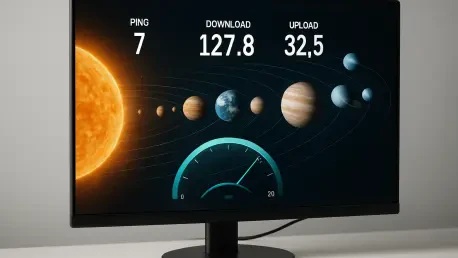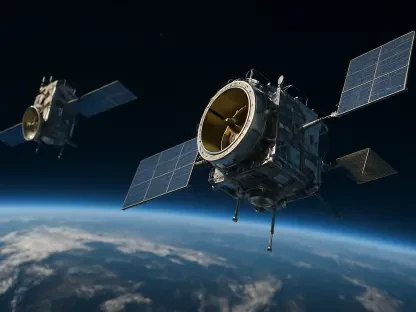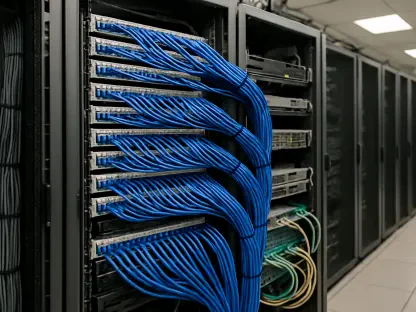In an era where humanity’s reach extends beyond Earth, a remarkable milestone has been achieved in the realm of interplanetary communication, promising to reshape how data is managed across vast cosmic distances with unprecedented efficiency. A pioneering test conducted by a Tampa Bay-based company, Lonestar Data Holdings, has successfully demonstrated the potential of a Solar System Internet (SSI) through a lunar data center mission. This groundbreaking experiment, carried out aboard a lander as part of a recent lunar mission, marks a significant leap toward establishing reliable communication networks for future space exploration. By harnessing innovative technologies designed to tackle the unique challenges of space, this achievement not only enhances prospects for missions to the Moon and beyond but also offers transformative possibilities for terrestrial applications. The implications of this success are profound, bridging the gap between space technology and practical needs on Earth, and setting the stage for a new era of connectivity.
Breaking New Ground in Space Communication
The core of this historic test lies in the application of Delay Tolerant Network (DTN) technology, specifically engineered to manage the high-latency environments inherent to space travel. During the mission, Lonestar Data Holdings utilized a lunar data center to simulate real-time data transmission, focusing on advanced medical information sent from cis-lunar space back to Earth. This demonstration proved that even with significant delays in signal travel, critical data could be reliably processed and delivered. Such a feat is essential for future endeavors where astronauts may require immediate access to health monitoring systems or remote medical support. The ability to handle such complex transmissions under extreme conditions showcases DTN as a viable solution for overcoming communication barriers that have long hindered deep-space missions, paving the way for more ambitious explorations.
Beyond the technical triumph, this test also highlights the potential for edge processing in space-based data centers to revolutionize how information is managed off-world. By processing data at the source rather than relying solely on Earth-bound systems, latency issues are minimized, ensuring quicker access to vital information. This approach was vividly illustrated in the lunar mission, where edge processing enabled seamless handling of intricate datasets under simulated conditions of lunar orbit. The success of this method suggests a future where space missions can operate with greater autonomy, reducing dependence on constant Earth communication. Moreover, the implications extend to enhancing safety protocols for astronauts, as real-time data analysis could enable rapid responses to health emergencies, fundamentally altering the landscape of crewed missions to distant celestial bodies.
Implications for Healthcare and Beyond
One of the most striking aspects of this achievement is its direct application to healthcare, both in space and on Earth. The transmission of medical data during the test underscores the potential for remote health monitoring and even telemedicine in environments far removed from traditional infrastructure. Experts in space health technology have noted that secure data systems, like those developed by Lonestar, could soon support digital healthcare solutions for lunar and Martian missions. This capability addresses a critical need for data safety and accessibility, ensuring that astronauts can receive timely medical interventions despite being millions of miles away. The fusion of space exploration with digital health innovations represents a pioneering effort, promising to safeguard human life in the harshest of conditions while pushing the boundaries of medical science.
Equally compelling is the broader impact of these technologies on terrestrial challenges, particularly in remote or underserved regions. The same DTN and edge processing systems that enable communication across interplanetary distances can be adapted to improve connectivity in isolated areas on Earth. Imagine disaster-stricken zones or rural communities gaining access to critical services through networks designed to withstand high latency and limited infrastructure. Industry leaders have emphasized that the dual-use nature of this technology could bridge digital divides, offering robust solutions where conventional systems fall short. This synergy between space innovation and earthly needs reflects a holistic vision for technological advancement, where solutions developed for the cosmos find meaningful applications closer to home.
A Vision for Interplanetary Connectivity
Looking back, the successful test of the Solar System Internet via a lunar data center stands as a defining moment in the evolution of space communication. The mission’s ability to transmit complex medical data across vast distances with high latency proved the effectiveness of Delay Tolerant Network technology in real-world scenarios. This accomplishment, backed by insights from key figures in space and technology, demonstrated not only the feasibility of interplanetary networks but also their practical utility in supporting astronaut health and safety during extended missions.
As a next step, the focus must shift to scaling these systems for wider implementation, ensuring they can handle the demands of larger missions and diverse applications. Collaborative efforts between space agencies, technology firms, and healthcare providers will be crucial in refining and expanding this framework. Additionally, exploring how these innovations can address connectivity challenges on Earth offers an exciting frontier for future development. This historic test laid a solid foundation, and the journey ahead promises to integrate space-derived solutions into everyday life, transforming communication and support systems across all environments.









